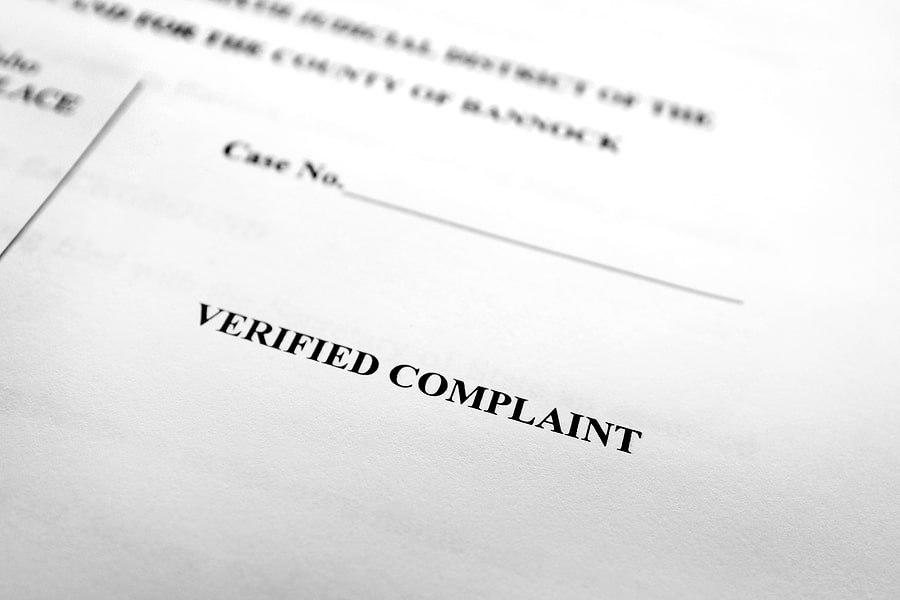|
Getting your Trinity Audio player ready...
|
The U.S. Securities and Exchange Commission (SEC) has filed a civil complaint against blockchain company LBRY for the offering of unregistered securities, becoming the latest target of a regulatory blitz which is challenging the common belief that law and regulation have no place in the digital asset industry.
The SEC has taken issue with LBRY’s LBRY Credits (LBC). According to the SEC, LBRY, whose business focuses on the distribution and monetization of digital content without the use of an intermediary, created and offered the LBC tokens to finance the development of its platform.
The SEC says that the LBRY offering constituted an offering of securities under the Howey test. Howey is the landmark U.S. case which sets out the elements required for determining whether or not an asset is a security for the purposes of U.S. securities law. The test is comprised of three parts:
- There was an investment of money
- The investment was made into a common enterprise – the LBC holders
- There was the reasonable expectation of profits derived from LBRY’s efforts
If all three are satisfied, then the test is met and the asset is a security. Thus, the offering of that asset must be done in compliance with the onerous U.S. securities legislation. A retrospective finding that an asset fulfils the Howey requirements means the offering of that asset was illegal, and the SEC can strip the offending company of the profits derived from the offering (among other things)—as is the case here.
As is typical with Howey applications, the third prong is the most significant in the case of digital assets, and the case is more likely than not to turn on this point. Indeed, the SEC concentrates most of its argument on prong. Securities laws are intended to protect passive investors as distinct from more direct, hands-on investors who are less vulnerable; this prong of the test is a significant factor in delineating between the two for the purposes of deciding whether someone amounts to a security. Where the profit is to be derived from the efforts of ‘active participants’ as opposed to a decentralized network of users, then this component of Howey is more likely to be satisfied.
With that in mind, LBRY seems to have gone about its LBC offering in a way designed to catch itself within Howey. For example, according to the SEC filing, LBRY advertised the project as this:
“Our goal is to increase the long-term value of the protocol, which if adopted globally will make our [LBC Operational Fund] many times more valuable than any short-term bubble. We’ve already invested 10,000 working hours into this project, and it will take many more, but we’re patient and focused on the future.”
Similarly, according to the LBR website in 2016, “LBRY Credits will work on behalf of the development of the LBRY content distribution network, not the other way around.”
LBRY would also take steps to actively control LBC price volatility in order to encourage adoption of the LBRY network, including controlling supply to increase demand and therefore increase the profits earned by its investors.
Analysis
If Howey is to turn on whether or not a project is sufficiently decentralized to avoid meeting the third test, as seems to be the SEC’s approach, then LBRY and LBC seem to be easy cases for the SEC. LBRY is entirely centralized for the same reasons the likes of BTC can be said to be centralized—namely, that administration of the project rests with a small group of organized developers employed by LBRY who decide on the development of the project and then carry out that development themselves. On this point, it differs from BTC only in that LBRY has gone to considerably less effort to hide this state of affairs, as exemplified in the SEC suit (and above).
LBRY and the LBC project go even further than BTC, however, in that the company openly and directly manages the market for LBC with the express intention of increasing the token’s value. For example, to curb the aforementioned price volatility, LBRY appointed a vendor to place buy and sell orders on the secondary market to guarantee liquidity to maintain price levels. Though a common practice among digital asset providers, rarely is the manipulation as openly admitted to as it has been in the case of LBC.
Predictably, the LBRY PR machine is in full effect, trying to cast this SEC case as an “attack on crypto” with the company itself playing the role of martyr. A PR triage centre was set up immediately after the filing, where LBRY assures the reader that the SEC’s case is a disaster for the U.S. economy and only for the benefit of “big tech and Wall St.”
HELP US SAVE CRYPTO
The future of crypto in US is at risk.The SEC are suing us and saying LBC is a security – it’s not!https://t.co/ALAVmgDsDI#helplbrysavecrypto pic.twitter.com/bJIOOgXeyY
— LBRY 🚀 (@LBRYcom) March 29, 2021
It makes this case in an economical 100 words, which is to say it doesn’t make any case at all. The closest it gets is arguing that under the standards being insisted upon in the SEC’s suit, “almost any token is a security, including the previously safe Ethereum”—an unfortunate comparison given that Ethereum’s status as a security is an open question and the then Director of the SEC’s Division of Corporate Finance has implied that at the least the initial creation and offering of Ether constituted a securities offering.
LBRY is right to say that under securities laws, most token offerings would fall within the definition of a security and thus those offerings amounted to the illegal offering of unregistered securities, as LBRY is being accused of here. One would imagine this is the exact point the SEC is trying to make.

 12-21-2025
12-21-2025 




